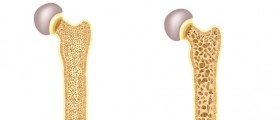
Bone spurs can be painful, because of the fact that they can rub against nearby bones or nerves, meaning that they cause swelling and consequently pain. A bone spur in the hand usually occurs on the palm and it feels like a lump. You may also easily be able to see it externally.
Causes of bone spurs on the hand
A bone spur in hand looks like a lump and appears usually on a person's wrist, fingers, and on the palm. Sometimes, a bone spur on the hand goes undetected until it starts to irritate the adjacent tissues and it begins to cause pain and swelling.
Behind the formation of bone spurs lies the body’s own repair mechanism. Whenever the body detects a deformity, degeneration or damage to the bone, it starts making extra bone to repair it. The new bone tissue gradually hardens and forms a bone growth on top of the damaged bone. However, this attempt to repair the damage sometimes causes even more damage, especially if the new bony growth rubs against tissues, tendons, other bones or nerves.
People who have degenerative joint disorders often suffer from bone spurs because of the inflammation and wearing off of the cartilage.
Treatment for bone spurs in the hand
The first thing to do after noticing a bone spur in hand is to take rest and to try not to use the affected hand too much, because movement and strain increase the friction and consequently the irritation that can occur from the bone spur.
The treatment for a bone spur depends on its underlying cause. In most cases, a bone spur in someone's hand indicates a joint disorder, so that needs to be checked, diagnosed and treated accordingly. Sometimes bone spurs are so small that they cannot be noticed. However, there are other symptoms, like pain in the patient's wrist, palm or fingers, which may indicate the presence of a problem.
After hearing about the symptoms, doctors usually do an X-ray exam to determine the cause of the problem. Painkillers, usually non-steroidal anti-inflammatory drugs which simultaneously alleviate pain and fight inflammation, are prescribed for the pain. Sometimes, doctors suggest corticosteroid injections which help with pain, inflammation and swelling. Muscle relaxants are prescribed for patients whose symptoms include muscle spasms. Ice packs applied to the bone spur also help with the pain.
In some cases, a bone spur in a hand causes great problems and impairs movement of the hand, in which case doctors suggest a surgery to remove the bone spur completely.
Anyone who has noticed persistent pain, trouble with mobility, or a hard lump on any part of their hand would be advised to seek medical attention for proper diagnosis, after which you can discuss further treatment with your doctor. Remember that not all bone spurs need any specific treatment; if your bone spur is small and does not cause unpleasant symptoms, your doctor may simply want to keep an eye on it.

















Your thoughts on this
Loading...